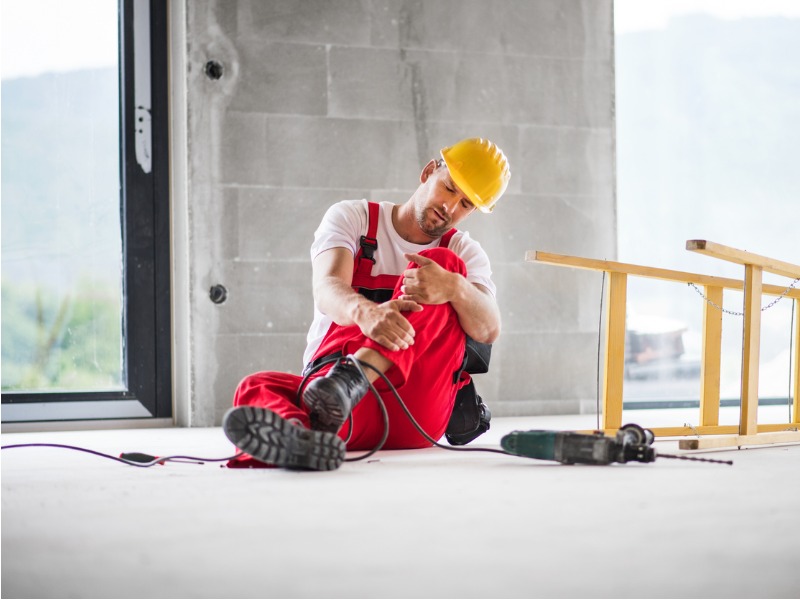Ladder Safety: Reducing Falls in Construction
Introduction
In the construction industry, falls are the leading cause of fatalities, with ladders being a significant contributor to this statistic. The Electronic Library of Construction Occupational Safety and Health (eLCOSH) published a comprehensive guide titled ‘Ladder Safety: Reducing Falls in Construction’ (https://www.elcosh.org/record/document/1996/d001010.pdf) to address this pressing issue. This 800-word article delves into the critical aspects of this guide and its significance for the construction industry.
Background
Created through a collaboration between the Center for Construction Research and Training (CPWR) and the National Institute for Occupational Safety and Health (NIOSH), this guide aims to provide practical information on ladder safety to construction workers, contractors, and supervisors. It sheds light on the selection, inspection, and proper use of ladders, with the ultimate goal of reducing fall-related injuries and fatalities.
Ladder Selection
The guide emphasizes the importance of selecting the appropriate ladder for the task at hand. The following factors must be considered when choosing a ladder:
- Material: Ladders are typically made of wood, metal (aluminum), or fiberglass. While wooden ladders are non-conductive, they can become damaged or unstable over time. Aluminum ladders are lightweight and durable but can conduct electricity, posing a risk if used around electrical equipment. Fiberglass ladders offer the best of both worlds, as they are non-conductive and long-lasting.
- Type: Ladders come in various styles, such as step ladders, extension ladders, platform ladders, and multi-purpose ladders. The guide provides information on each type and its specific applications.
- Load capacity: Ladders are designed to support a specific weight, which includes the user and any tools or materials being used. It is crucial to select a ladder with a load capacity that meets or exceeds the combined weight of the user and their equipment.
Ladder Inspection
The guide recommends inspecting ladders before each use, as damaged or worn ladders can lead to accidents. The inspection should cover the following:
- Rungs: Check for cracks, bends, and any signs of damage. Ensure that rungs are securely fastened and that anti-slip surfaces are intact.
- Rails: Inspect for cracks, splits, or bends. Ensure that they are free from sharp edges or splinters.
- Braces and hinges: Examine for signs of wear, damage, or missing parts.
- Safety feet: Verify that they are present, secure, and in good condition.
- Rope and pulley system (for extension ladders): Ensure the rope is not frayed and the pulley is functioning correctly.
Ladder Setup
Proper setup is vital for ladder safety. The guide outlines several essential steps:
- Select a stable, level surface for the ladder’s base. If the ground is uneven, use leg levelers.
- Position the ladder at the correct angle. A general rule of thumb is the “4-to-1 rule”: for every four feet of vertical height, the base of the ladder should be one foot away from the support surface.
- Extend extension ladders at least 3 feet above the top support point to provide a secure handhold when climbing or descending.
- Secure the ladder to prevent movement during use. Use tie-off straps or other restraints to anchor the ladder at the top and bottom.
Ladder Use
Once the ladder is appropriately set up, it is crucial to follow safe practices while using it:
- Maintain three points of contact while climbing or descending the ladder (two hands and one foot, or two feet and one hand on the ladder at all times).
- Face the ladder when climbing or descending, and avoid carrying heavy or bulky items that may cause you to lose balance. Use a tool belt or hoist to transport materials instead.
- Do not overreach while on the ladder. If you cannot access your work area comfortably, reposition the ladder.
- Avoid using the top two steps of a step ladder, as this increases the risk of falls.
- Be cautious of environmental factors, such as rain, snow, or wind, that may make ladder use more hazardous.
Training and Supervision
The guide stresses the importance of proper training and supervision in ladder safety. Workers should be educated on the correct use, setup, and inspection of ladders. Training should be ongoing and include practical demonstrations to ensure workers understand and retain the information. Supervisors should monitor workers to ensure that safe practices are followed and address any unsafe behaviors immediately.
Conclusion
The ‘Ladder Safety: Reducing Falls in Construction’ guide is a valuable resource for the construction industry, providing practical and comprehensive information on ladder safety. By selecting the right ladder for the job, conducting thorough inspections, setting up ladders correctly, and following safe practices during use, construction workers, contractors, and supervisors can significantly reduce the risk of falls and associated injuries or fatalities. Implementing proper training and supervision further ensures that these safety measures are consistently followed, creating a safer work environment.





